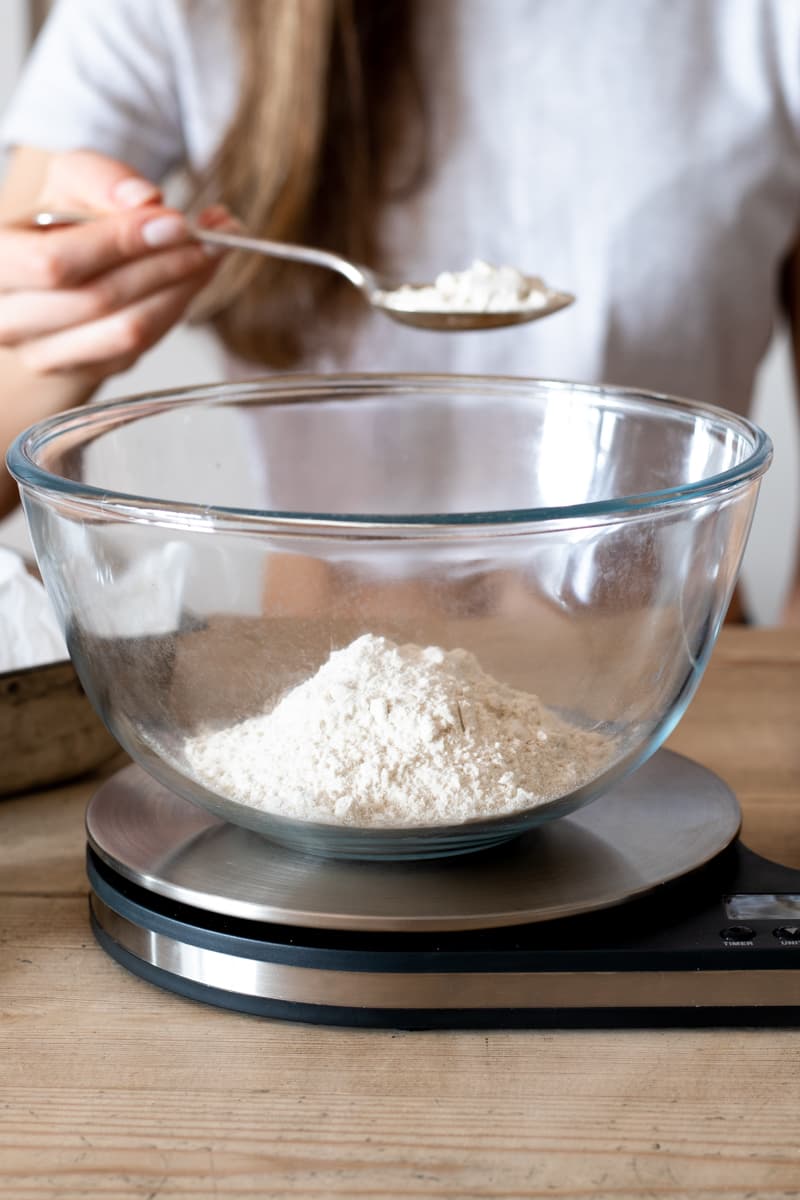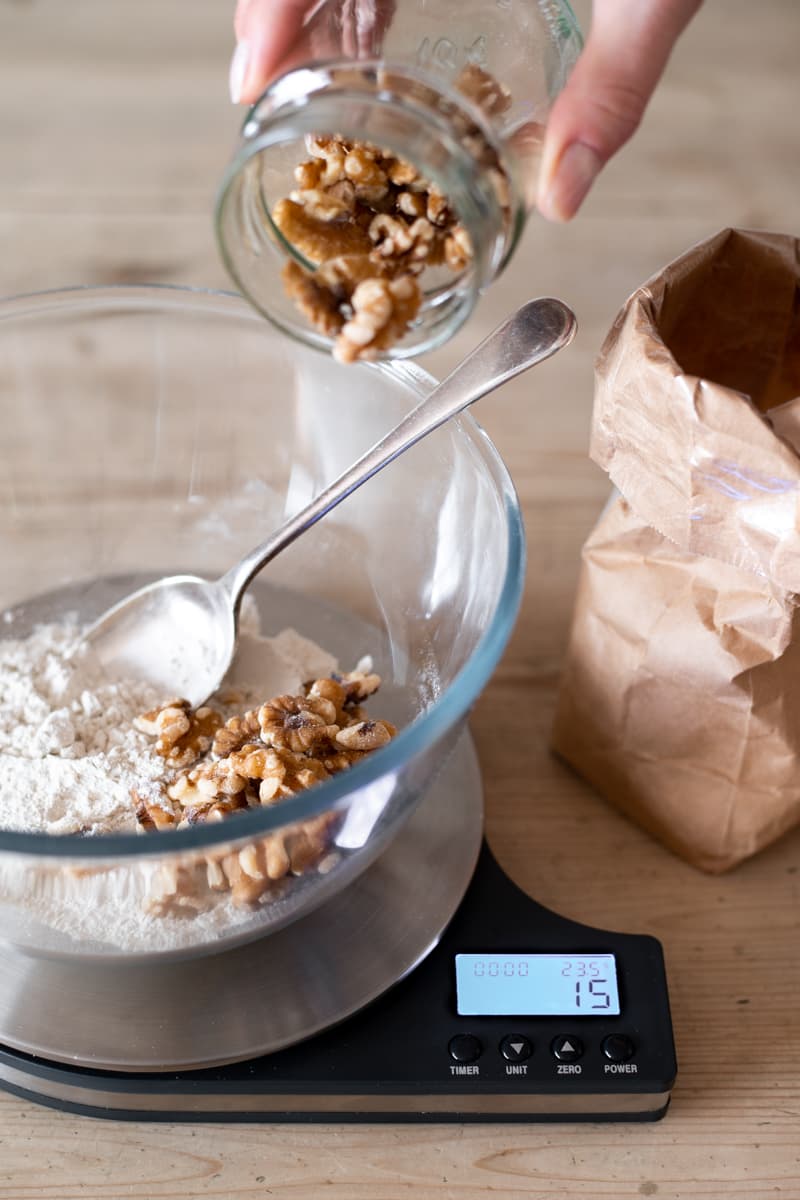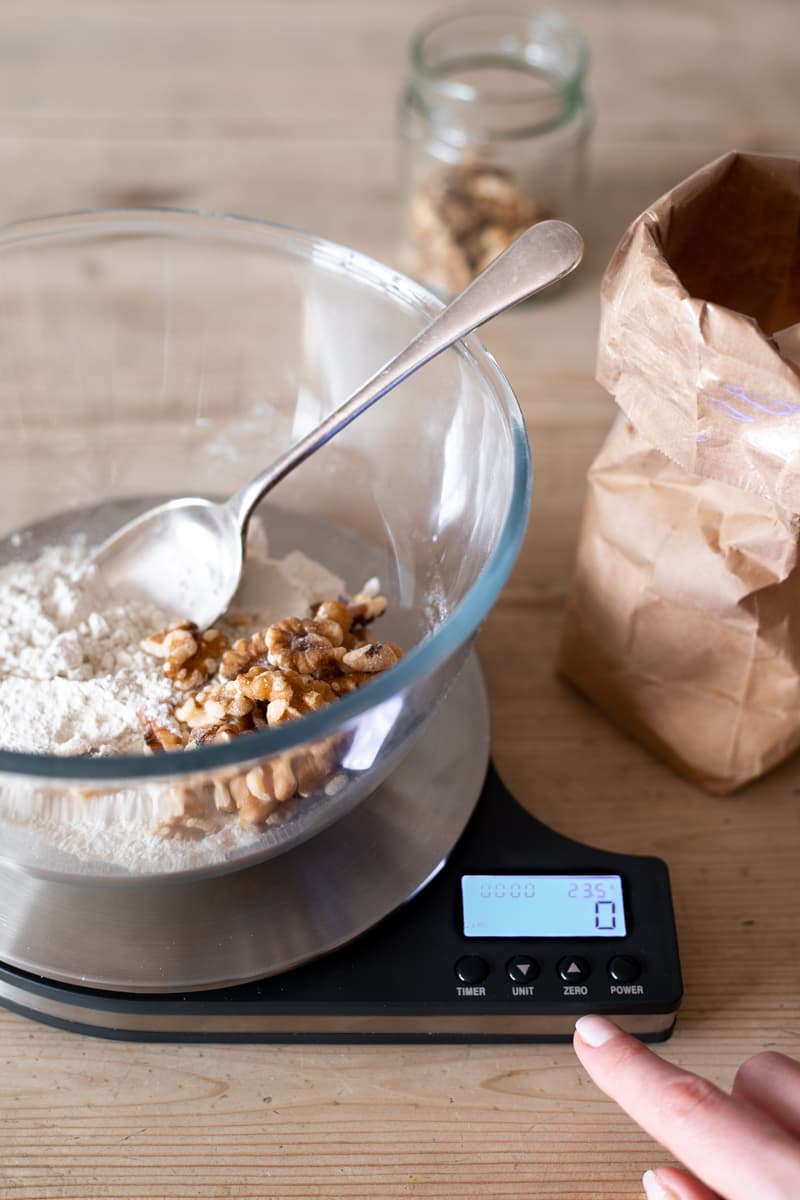Have you ever carefully followed a recipe, measuring out the ingredients in cups and spoons, but something went wrong with the end result? Maybe it turned out too dry, too wet, or just a complete mess. Learning how to use a food scale could be the remedy you need.
Recently, I switched to measuring my ingredients on a kitchen scale. I cannot believe it took me this long to do so. Not only is it more accurate than using measuring cups and spoons, it also streamlines the preparation process.

First, I’ll explain why a food scale will guarantee best results in the kitchen, particularly when baking. Second, I’ll show you how kitchen scales can reduce washing up (spoiler alert: it’s the tare function). Third, I’ll give you a step by step guide on how to use your food scale.
Digital kitchen scales are more accurate than measuring cups and spoons
You can get away with some inaccuracy in measurements when cooking everyday meals. But baking is different. An extra 50g of grated zucchini in a zucchini bread or muffin recipe can leave you wondering why the end result turned out soggy. An extra 20g of flour can result in dry cookies. I experienced this when making these Buckwheat Jam Thumbprint Cookies.
In the process of making that recipe, I realized first hand that how you pack ingredients into your measuring cups and spoons really does matter. Dunking a measuring cup into a bag of flour results in more flour by weight than gently spooning the flour into the cup. This is because the scooping action compresses the flour as it enters the cup, so more flour makes its way into your recipe.
Measuring cups and spoons are different around the world
Another hurdle to overcome with measuring cups and spoons is that they differ in size depending on where you purchase them. For example, an Australian cup measures 250ml, whereas a US cup is approximately 237ml. I have also bought some tablespoons in Australia that are 15ml and others that are 20ml.

The solution? When writing my recipes, I’ve started including measurements in grams and milliliters along with the US cup and spoon measurements. I know that most of you in the UK already measure things in grams and milliliters. Many of us in Australia also do so.
I will also give you the weight in grams for liquids so that you can measure those on your scale as well. The only time I won’t specify a weight is for teaspoon measurements. One teaspoon is consistently 5ml across countries. Plus a teaspoon measure, or fraction thereof, usually doesn’t weigh enough to register well on the scale.
You will have less washing up if you use a food scale
This is my favorite reason for using food scales. Measuring ingredients using a digital kitchen scale results in less washing up thanks to the tare function. I show you how to use the tare function below.

The ‘tare’ button, which is sometimes labelled ‘zero’, allows you to measure out multiple ingredients in the same vessel or container. This removes the need to use and wash up multiple measuring cups and spoons. The only caveat is that your recipe needs to specify the weight of each ingredient in grams. As mentioned above, I have started to do this to make your life easier!
Another handy use for a food scale is to monitor portion sizes, or if you are tracking macronutrients. I don’t usually track my meals unless I need to dial in my diet. In those cases, I will monitor my overall nutrient, protein and carbohydrate intake more closely, and a food scale helps with this.
How to use a food scale in the kitchen
Once you’ve bought a digital food scale and turned it on, this is what you do.
- Place your vessel on the scale
Your vessel could be a mixing bowl, pot, pan, plate or a container. Whatever you’re using to mix or gather your ingredients. The scales will show the weight of the vessel. - Hit the tare, or zero, button
This resets the scales to zero, so the weight of your vessel isn’t included in what you’re about to measure. - Measure out your first ingredient
Slowly add your first ingredient until the desired weight is shown on the scale. - Hit the tare, or zero, button again
This resets the scale to zero again, so you’re ready to weigh out your next ingredient. - Repeat until all your ingredients are measured
That’s it.